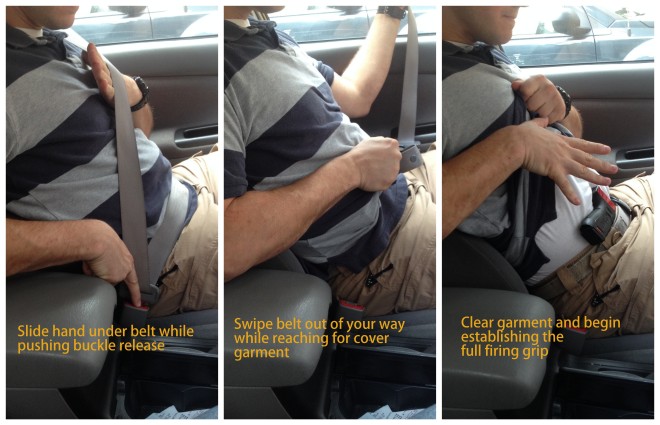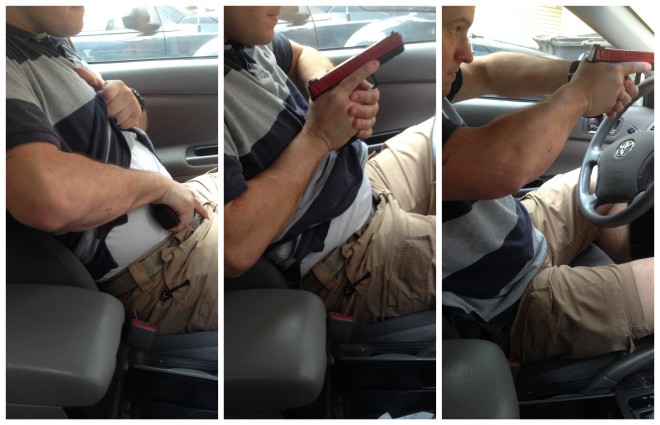Based on pure probability, what’s the most dangerous thing we will do with our guns in our lifetime? Is it:
- Going to Public Ranges?
- Taking multi-day professional instruction?
- Getting into a gunfight?
- Living life with and around guns?
If you answered going to public ranges, good guess, but wrong. The answer is day to day administrative gun handling and living around guns. Every time the gun leaves or enters the holster, every time we set up for dry-fire, every time we take an EDC selfie for Instagram (don’t do that), every press-check, every time we transfer our pistol from our waistband to a car safe, every time we handle our gun, there is a small chance of making a mistake. Though the chance of negligence is very very tiny, we flip that coin every time we touch our gun. Over the course of a lifetime, that’s a lot of coin flips and the chance of messing up becomes a real possibility.
There are two kinds of people in this world: those who have had a negligent discharge, and those who will.
While a gunfight is certainly dangerous, the average gun owner will never need to use their gun to defend themselves. But they WILL live with a gun for as long as they own it. So, that means the biggest threat we face is our own negligence over the course of a lifetime. Just by having the gun around, there is always a low-grade probability that an accident could happen. I don’t think most people think about this. Especially not the ‘I just bought a gun, I’m good’ magic talisman gun owner. They should.
Minimizing Risk
- Eliminate unnecessary gun handling. If possible, avoid moving your loaded gun from holster to car magnet to briefcase to… Load it, put it in the holster, and go about your business.
- Have robust safety measures for dry fire. The gotcha moment for most NDs in dryfire is the ‘Just One More Press’ mentality that can happen after you’ve reloaded after practice. I use The Tactical Professor’s robust dry fire safety protocols and I like them.
- Always concentrate on sharp gun handling. The primary safety is muzzle direction. This seems to be a big problem in cars. People want the privacy of their car to move their gun around or take selfies for the ‘gram, but don’t practice good muzzle discipline in confined spaces and end up flagging themselves or others.
- Don’t have conditional gun handling rules. Always avoid pointing at things you don’t want to shoot, even when you’re sure “It’s unloaded”. The two loudest sounds in the world: a bang when you expect a click, and a click when you expect a bang.
- Avoid leaving your guns laying around for someone (usually a child) to play with. Either on you, or secured.
- Maintain and use quality gear. Also consider how your clothing affects your gun handling. Floppy holsters and errant T-shirt material are responsible for lots of accidents.
- Maintain a healthy respect for firearms.

Nope. 
Why? 

Paradoxically, we own and carry guns to make ourselves safer from high stakes statistically rare events, but in owning those tools we open ourselves to the risks inherent in tool itself. It’s worth considering.
There are a lot of people I interact with online who should deeply consider if living with a firearm is the right choice for them. I’d like to see people hold themselves to a higher standard and treat these tools with the respect they’re due. I hate hearing about kids shooting their siblings after they found mom’s pistol in her purse at the grocery store. We can do better, we just have to remind ourselves of the risk we assume when we own and carry a gun.
Thanks for reading.
If you find value in my ramblings, please subscribe, share, and shop through our amazon affiliate link. Or consider a small donation through PayPal.









